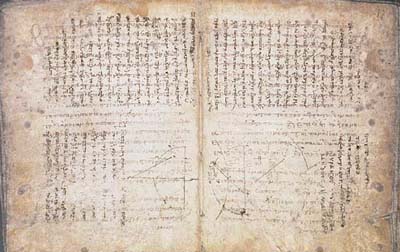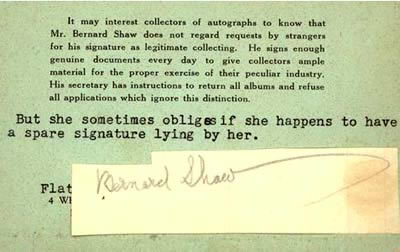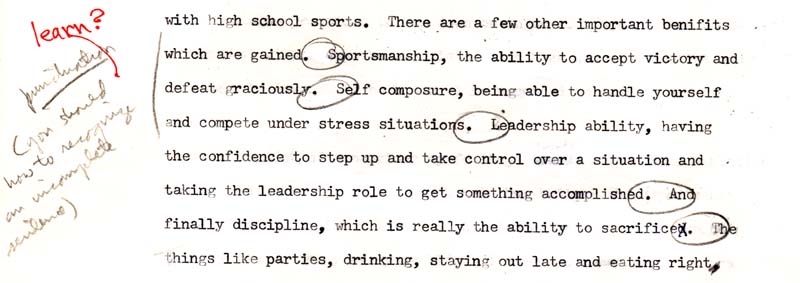|
Palimpsests
and Erasure |
|
|
Palimpsest (Gr. palin + psestos, re-scraped): A
document consisting of a later text written over an erased or partially
erased earlier one. Parchment and vellum, valuable commodities, were
often re-used this way. |
|
 |
A page of the Archimedes Palimpsest, currently the most famous of palimpsests. It is a 13th-century Orthodox Greek prayer book that was written over an incompletely erased 10th-century manuscript of some mathematical treatises of Archimedes (the computer-enhanced older text runs vertically). Discovered in 1907, the manuscript disappeared for 91 years, then was sold several times, and now is being preserved and deciphered at the Walters Art Museum in Boston. The older text is proving that we have radically underestimated the classical Greek knowledge of mathematics. [Image from American Scientist Online © Christie's Images] |
A 1927 postcard from George Bernard Shaw in response to a plea for an autograph. Shaw got so much correspondence that he had stock replies printed up on postcards. This is his standard refusal to provide his signature for the "peculiar industry" of autograph collectors. Amusingly, his secretary, Blanche Patch, erases Shaw's refusal by pasting on it a signature that she happens to have "lying by her." [Image from an exhibit at Brown University Library] |
 |
Below is eight
lines from a freshman theme I received in 1963, when I was a teaching
assistant at the University of Missouri. My marginal comment, in pencil,
reads, "punctuation (you should how to recognize an incomplete
sentence)," part of my effort to erase the student's full stops
in the text. When I conferenced with the student over the paper in my
office, I saw that he had inserted—in magisterial red ink—the
word "learn" that I had inadvertently omitted from my comment.
Part of his effort to erase my authority over flawless English? |
|
 |
|
|
Hyptertext may have created something new under the sun, a palimpsest without erasure; but the spirit of erasure still lives on when one generation's text meets another's. RH October 2005 |
|